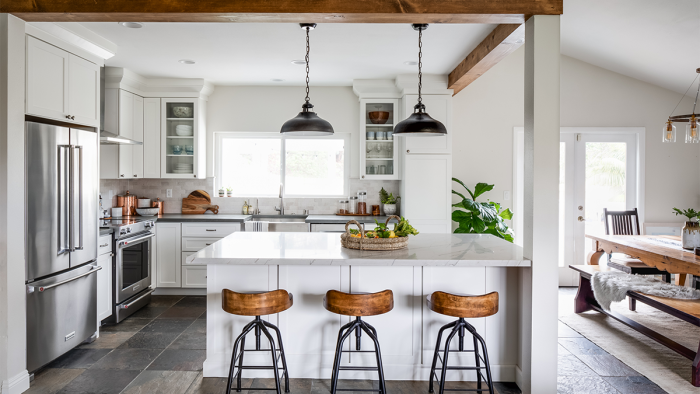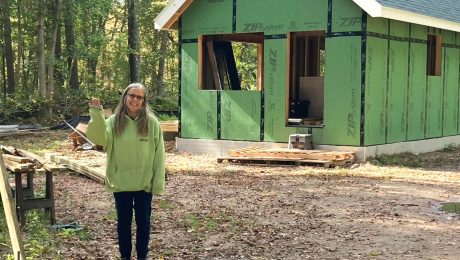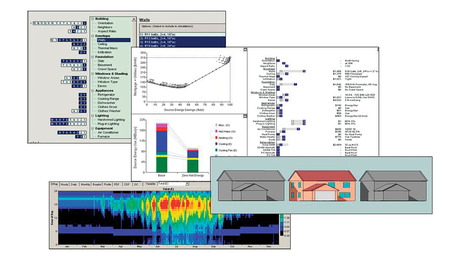4 Types of Residential Project Delivery Methods
Understanding the available options and the client-contractor relationship can help put both clients and contractors on equal footing.

Most of us have our first consumer experience very early in our lives. Whether we’re buying candy or a ticket for an amusement park ride, it teaches us a foundational lesson about being a consumer: You have a sum of money that you are comfortable spending on the purchase of a good or a service and you use whatever information is available, such as a price tag and background information, to determine what you can afford to purchase. While this system holds true for almost all our purchases from candy to clothes, the formula breaks down quickly when the consumer attempts to purchase goods and services from a building contractor.
I believe that this breakdown is a direct result of the difference in how the goods and services of a building contractor are delivered versus how you purchase an existing product such as a car or an item from a store. The latter has a clear, well-defined means of selling and purchasing. But what about a kitchen remodel or a new custom home? How does a consumer know what to expect to pay when there is no clear-cut price tag? And how can a contractor better evaluate what projects represent the best possible path to success?
Understanding project delivery methods and the differences in the client-contractor relationship that are inherent to each of these methods can help put each party on equal footing right from the start by matching educated consumers with contractors who are confident in their ability to deliver a built product at a fair price. Because a kitchen remodel is both a familiar project to both homeowners and contractors and also requires a complex level of planning, design, and engineering, this serves as a good example for comparing project delivery methods. The simplest end of the spectrum is the pull-and-replace kitchen remodel in which the layout of the space stays the same, no plumbing or electrical rough-ins change, and often the drywall or plaster can remain intact. On the other end of the spectrum is a kitchen that is part of an addition or a whole-house remodel, and this can be one of the most complex projects to deliver. In many municipalities, the building regulations will be a driving factor in the selection of the project delivery method.
Type 1: Independent tradesperson
Hiring an independent tradesperson to execute your project is a straightforward delivery method that provides the homeowner the opportunity for more custom options. For many generations, being a sole proprietor has been a good way to make a living by performing varied scopes of work for people in your community. On a simple pull-and-replace kitchen remodel, a highly skilled independent tradesperson may be able to execute much, if not all, of the work required to complete the project. In many cases this tradesperson may allow the client to purchase the materials and/or execute part of the project themselves. To pursue this project delivery method, the homeowner must be willing and able to choose material finishes and procure materials in a timely fashion with little to no professional guidance. Independent tradespeople who are working for a wage, which includes the basic burdens of insurance and licensing, usually price projects based on their own estimate of how many hours the project will take.
This can put additional risks on the tradesperson when the client is not able to hold up their end of the work, as the current project is likely the only project bringing in income for the tradesperson. This risk can make it very difficult for a homeowner who is new to the remodeling process to find a qualified independent tradesperson willing to take on a multiphase project without having a preexisting client-contractor relationship. Local municipality permitting regulations that require plumbing, electrical, and HVAC work to be done by licensed contractors can also make this project delivery method difficult to execute on all but the most basic remodels, leading the most intrepid of homeowners to the next project delivery method: owner/GC (general contractor).
Type 2: The Owner/General Contractor
The owner/GC project delivery method can be used by homeowners who have the time and ability to manage the entire remodeling process. Here, the owner is in control of all the deliverables from design to permitting and through to organizing and managing the contractors of their choosing. In this method, the owner may choose to hire an independent tradesperson to perform as much of the work as they are able, or they may choose to hire a smaller contractor whose team is able to perform most of the non-mechanical scopes of work. In whatever manner the owner/GC chooses to structure their team, it is important that they are ready to make timely decisions and act as the conduit of information between the individual subcontractors. Any cost savings that the owner/GC expected on paper prior to the start of the project can be erased by the re-work caused by vague or incorrect information.
Type 3: Design-Bid-Build
The design-bid-build project delivery method can be operated in the exact same way as the owner/GC method, but in most cases design-bid-build involves an architect or designer who can produce a full set of drawings and specifications. It is for this reason that this method lends itself well to large-scale complex projects where space planning, structural engineering, and mechanical-systems design are required to be completed in advance of selecting a general contractor. For the most complex projects, a homeowner can choose to have the architect manage the project, but the most common option is to hire a general contractor who has experience in the project type and will have the resources to execute the project. These general contractors will have a roster of reliable subcontractors for a multitude of custom scope of work options as well as their own trade and management labor. Most importantly, they will also have the financial means to fund the project and administer the contracts of their subcontractors. These resources are developed over years of being in business and focusing on projects that fit their strengths while saying no to the projects that do not.
Type 4: Design-Build
The design-build project delivery method is an evolution of the design-bid-build method. In this case, the homeowner contracts with one single entity that will provide the design work and built project as one turnkey package. Integrating the build and design team under one company structure can speed up the process by only providing the design work necessary to satisfy building regulations while giving the in-house build team the information that it needs to build the project. On some larger projects, the design team may only provide enough design work for the project to be priced and started by the build team while the homeowner and the design team focus on secondary design items like finish selections that can be procured as the project is being built by the build team. These secondary design items would be priced within the build contract as allowances based on the options under consideration. The benefit of this model is the reduction of time between design completion and the start of construction. One result of this integration is that homeowners will have less opportunity for taking actionable roles in the build, as the markups charged on subcontractors and material are a crucial part of the financial success of the design-build company.
One delivery option that falls under the design-build model is the retail showroom contractor. These contractors specialize in executing kitchen and bath remodels with a level of speed, efficiency, and low cost that a custom contractor cannot match. For remodels that focus mostly on a refresh of finishes and do not require changes to the space, a retail showroom contractor can offer a high level of value to a homeowner who’s willing to go with one of the showroom’s preselected options and is looking for a contractor to provide a turnkey option.
The design-bid-build and the design-build model both offer the homeowner high degrees of project customization and the ability to build highly complex and resource-heavy projects. This comes at the expense of homeowner involvement in the build, but as projects grow in size and complexity, the regulatory requirements alone often push otherwise capable homeowners in this direction.
Why this is important
If you listen to tradespeople and contractors discuss the reasons for their success you will hear contractors talk openly about the jobs that they turned down or lost during the bidding process. They may have watched a local competitor struggle with an owner/GC or know of another independent contractor who is still waiting to be paid by a homeowner. By understanding what your project delivery method is and considering whether the project and the prospective client is a right fit early in the sales process, a contractor can reduce the risks associated with where they choose to use their resources.
Homeowners can also save themselves time and money by considering project delivery methods during the early planning stages of their project. Homeowners should ask themselves: What are my goals with the project? How are projects permitted? How quickly do I want it done and how much do I want to be involved? This is just as important as determining how much they want the project to cost. Without thinking about these questions, it is easy for a homeowner who needs two bearing walls moved to create a large open kitchen to think that their project should have a similar cost as a neighbor’s pull-and-replace kitchen project executed by a retail showroom. Understanding the differences in project delivery methods is a first step in creating a level playing field by guiding homeowners to think critically about the goals of the project before focusing on cost and contractors to consider what projects are the right fit for their processes.
—Ian Schwandt is a production manager and contributing editor for Fine Homebuilding.
To see the full PDF click on the “view PDF” button below:
From Fine Homebuilding #318
RELATED STORIES
- Kitchen Remodel on a Budget
- The Many Benefits of Design-Build
- Best Practices for Home-Building Project Communication
Fine Homebuilding Recommended Products
Fine Homebuilding receives a commission for items purchased through links on this site, including Amazon Associates and other affiliate advertising programs.

Graphic Guide to Frame Construction

The New Carbon Architecture: Building to Cool the Climate

A House Needs to Breathe...Or Does It?: An Introduction to Building Science




























